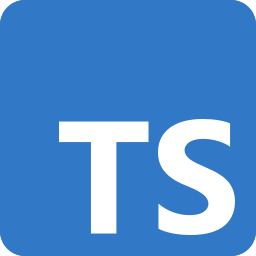
Typescript
Type vs Interface in TypeScript - When to choose what
- Extend with interface and type
- Implements
- Declaration merging
- Difference and matches between interface and type
- What should We Use?
Before TypeScript 2.1 there was a lots of difference between interface and type in TypeScript. But now with TypeScript > 5.x there is very less difference with both.
What we can do using interface, can do easily also with type for almost 95% cases.
Let’s see an example of Same works with both interface and type -
Interface
interface Point {
x: number;
y: number;
}
interface SetPoint {
(x: number, y: number): void;
}
Type alias
type Point = {
x: number;
y: number;
};
type SetPoint = (x: number, y: number) => void;
So, we can see in the above example that we can do same stuff with type and interface.
¶Extend with interface and type
Both can be extended, but again, the syntax differs. Additionally, note that an interface and type alias are not mutually exclusive. An interface can extend a type alias, and vice versa.
¶Interface extends interface
interface PartialPointX { x: number; }
interface Point extends PartialPointX { y: number; }
Type alias extends type alias
type PartialPointX = { x: number; };
type Point = PartialPointX & { y: number; };
Interface extends type alias
type PartialPointX = { x: number; };
interface Point extends PartialPointX { y: number; }
Type alias extends interface
interface PartialPointX { x: number; }
type Point = PartialPointX & { y: number; };
¶Implements
A class can implement an interface or type alias, both in the same exact way. Note however that a class and interface are considered static blueprints. Therefore, they can not implement / extend a type alias that names a union type.
interface Point {
x: number;
y: number;
}
class SomePoint implements Point {
x = 1;
y = 2;
}
type Point2 = {
x: number;
y: number;
};
class SomePoint2 implements Point2 {
x = 1;
y = 2;
}
type PartialPoint = { x: number; } | { y: number; };
// FIXME: can not implement a union type
class SomePartialPoint implements PartialPoint {
x = 1;
y = 2;
}
¶Declaration merging
Unlike a type alias, an interface can be defined multiple times, and will be treated as a single interface (with members of all declarations being merged).
// These two declarations become:
// interface Point { x: number; y: number; }
interface Point { x: number; }
interface Point { y: number; }
const point: Point = { x: 1, y: 2 };
¶Difference and matches between interface and type
| Aspect | Type | Interface |
|---|---|---|
| Can describe functions | ✅ | ✅ |
| Can describe constructors | ✅ | ✅ |
| Can describe tuples | ✅ | ✅ |
| Interfaces can extend it | ⚠️ | ✅ |
| Classes can extend it | 🚫 | ✅ |
Classes can implement it (implements) |
⚠️ | ✅ |
| Can intersect another one of its kind | ✅ | ⚠️ |
| Can create a union with another one of its kind | ✅ | 🚫 |
| Can be used to create mapped types | ✅ | 🚫 |
| Can be mapped over with mapped types | ✅ | ✅ |
| Expands in error messages and logs | ✅ | 🚫 |
| Can be augmented | 🚫 | ✅ |
| Can be recursive | ⚠️ | ✅ |
¶What should We Use?
¶Use interfaces when:
- A new object or an object method needs to be defined.
- You wish to benefit from declaration merging.
¶Use types when:
- You need to define a primitive-type alias
- Defining tuple types
- Defining a union
- You must create functions and attempt to overload them in object types through composition.
- Requiring the use of mapped types
Advanced Types in TypeScript - In depth Types Learning in TypeScript
All Tutorials in this playlist
Popular Tutorials
Categories
-
Artificial Intelligence (AI)
11
-
Bash Scripting
1
-
Bootstrap CSS
0
-
C Programming
14
-
C#
0
-
ChatGPT
1
-
Code Editor
2
-
Computer Engineering
3
-
CSS
28
-
Data Structure and Algorithm
18
-
Design Pattern in PHP
2
-
Design Patterns - Clean Code
1
-
E-Book
1
-
Git Commands
1
-
HTML
19
-
Interview Prepration
2
-
Java Programming
0
-
JavaScript
12
-
Laravel PHP Framework
37
-
Mysql
1
-
Node JS
1
-
Online Business
0
-
PHP
28
-
Programming
8
-
Python
12
-
React Js
19
-
React Native
1
-
Redux
2
-
Rust Programming
15
-
SEO - Search Engine Optimization
1
-
Tailwind CSS
1
-
Typescript
10
-
Uncategorized
0
-
Vue JS
1
-
Windows Operating system
1
-
Woocommerce
1
-
WordPress Development
2
Tags
- Artificial Intelligence (AI)
- Bash Scripting
- Business
- C
- C Programming
- C-sharp programming
- C++
- Code Editor
- Computer Engineering
- CSS
- Data Structure and Algorithm
- Database
- Design pattern
- Express JS
- git
- Git Commands
- github
- HTML
- Java
- JavaScript
- Laravel
- Mathematics
- MongoDB
- Mysql
- Node JS
- PHP
- Programming
- Python
- React Js
- Redux
- Rust Programming Language
- SEO
- TypeScript
- Vue JS
- Windows terminal
- Woocommerce
- WordPress
- WordPress Plugin Development
